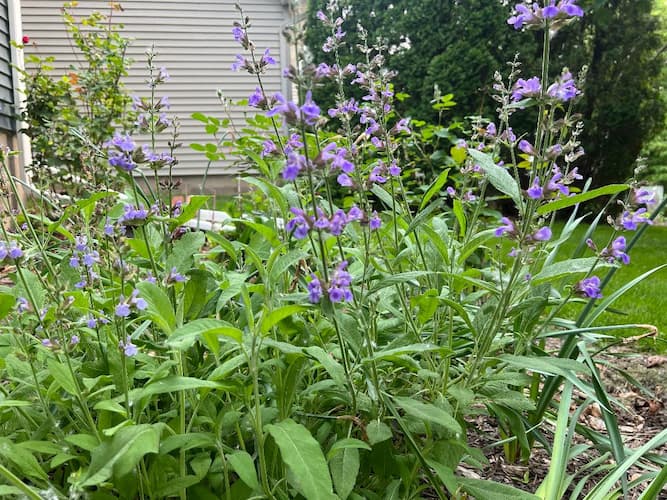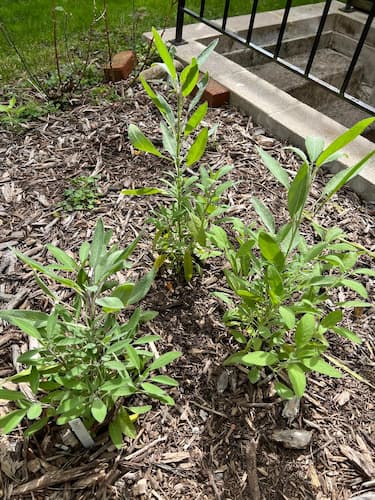How to Grow Sage Herb Plants

About Growing Sage Plants in Your Herb Garden
Common Sage, or Garden sage plants, can be found growing wild in the Mediterranean region. There are over 750 species grown all over the world. Like many herbs, it is also considered a flower. This herb grows as a shrub. Sage herb has a strong odor and is bitter tasting. It is commonly used in cooking.
The small bushes usually grow up to two feet high, with grey-green leaves. The leaves have a pebbled texture. Flowers have circular clusters.
Flowers Bloom: Summer
Flower Colors: Pink, purple, red, violet, red.
Plant height: 1 to 2 feet tall.
Hardiness Zones: 5- 9
Culinary Uses
Medicinal Uses:
Sage has many medicinal benefits, including:
- Fights bacterial
- Treats eye problems and infections
- Memory loss
- Treatment for epilepsy
- Treatment for worms and other intestinal problems.
Culinary Uses:
The leaves and stems of this herb, are used in cooking for flavoring sausages, pork, sauces, cheese, dressings, and stuffing. Grandma probably uses sage in Thanksgiving turkey stuffing. Also, Sage leaves are brewed for tea.
Other uses:
It is an aphrodisiac.
In the 1800s, Americans used it to whiten teeth.

Sage Plant Propagation
Sage plants are grown from seed. Directly sow seeds into your garden or started indoors for transplanting later. Start sage seeds indoors, six weeks before the last frost. If planting outdoors, sow seeds after the soil has begun to warm in the spring.
Sow sage seeds early in the season, and cover lightly with soil.
Note: For indoor transplants, we recommend a heated germination mat, to increase the speed of seed germination. Also, the germination rate is higher.
Final Plant Spacing: Space seedlings, or thin plants 18 to 24 inches apart.
Days to Germination: 7 – 21 days.
How to Grow Sage Herb Plants
Growing Sage plants is very easy. The plants prefer full sun and well-drained soil.
They will do well in average soils and tolerate dry soil conditions. Water them during dry periods, once or twice per week.
Add a general-purpose fertilizer once or twice a season.
Cut back plants after blooming, to promote new growth.
Tip: Harvest leaves in the morning when their oils are the strongest.
Ideal pH: 5.5- 6.5
Related Articles
Please support our site. Shop for:
- rmmatthews100@hotmail.com
- 585-721-6528
- Rochester, NY
©1999-2024 GardenersNet.Com, All Rights Reserved

